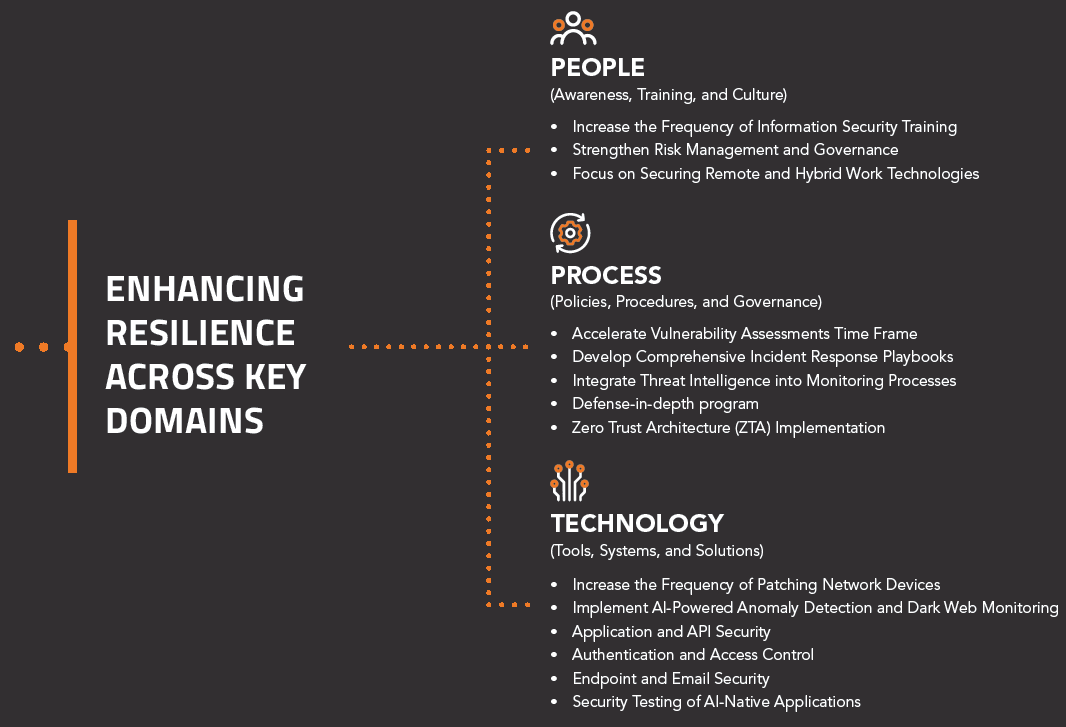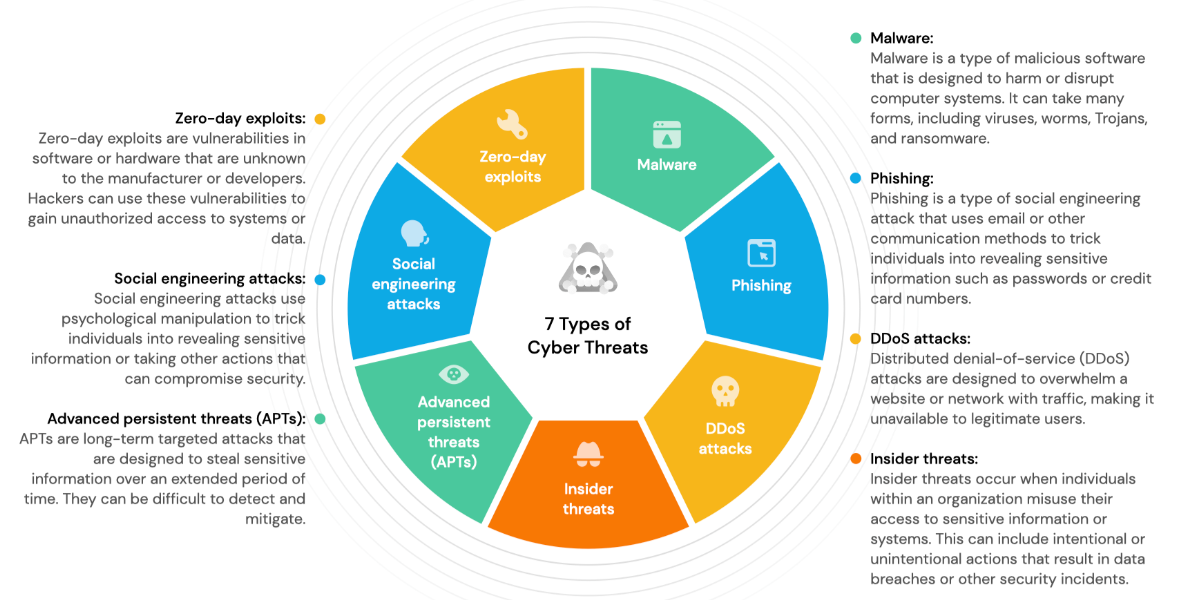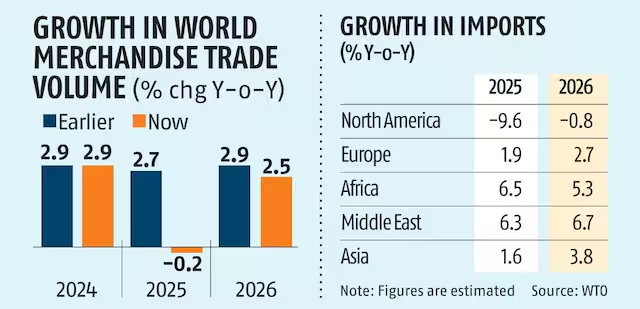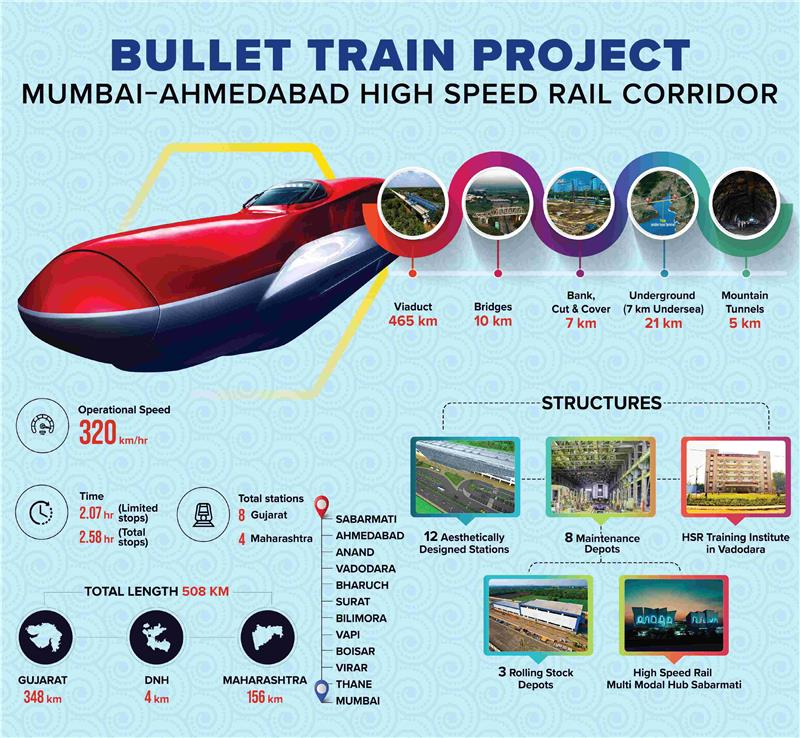India's Startup Ecosystem
For Prelims: Semiconductor, Machine learning, Department for Promotion of Industry and Internal Trade, Startup India, Atal Tinkering Labs, Venture capitalist
For Mains: Role of Startups in Economic Development, Government Policies Supporting Innovation and Entrepreneurship in India, Challenges in the Indian Startup Ecosystem
Why in News?
The Union Minister of Commerce and Industry expressed concerns over the limited innovation in Indian startups, urging them to shift focus from low-tech sectors like grocery delivery to high-tech industries such as semiconductor production, and machine learning.
What is the Current State of the Startup Ecosystem in India?
- Scale: India’s startup ecosystem is now the world’s 3rd largest, with over 1.57 lakh Department for Promotion of Industry and Internal Trade (DPIIT) recognised startups as of December 2024, up from just 502 in 2016.
- Backed by over 100 unicorns and major hubs like Bengaluru, Hyderabad, Mumbai, and Delhi-NCR, the landscape is expanding rapidly.
- Over 51% of startups now come from Tier II and III cities, reflecting nationwide entrepreneurial growth.
- Key Schemes and Initiatives:
- Startup India: Aims to foster innovation, create employment, and boost economic growth.
- Under Startup India over 17.28 lakh jobs were created, with key contributions from IT services, healthcare, and professional services.
- Rise in women-led startups, with 75,935 startups reporting at least one woman director.
- Startup India Seed Fund Scheme (SISFS): Launched with a Rs 945 crore corpus to support early-stage startups. By 2024 under SISFS, 213 incubators have been approved, benefiting 2,622 startups.
- Fund of Funds for Startups (FFS): It is managed by Small Industries Development Bank of India (SIDBI) and channels funds to Securities and Exchange Board of India registered Alternative Investment Funds (AIFs), which in turn invest in startups via equity and equity-linked instruments. By 2024, 1,173 startups have been funded.
- Atal Innovation Mission (AIM): Launched in 2016 to promote innovation, focusing on creativity and ecosystem-building.
- 10,000 Atal Tinkering Labs have been set up, and 3,556 startups have been incubated in 72 Atal Incubation Centres, creating 41,965 jobs.
- Credit Guarantee Scheme for Startups (CGSS): Provides credit guarantees for loans to DPIIT-recognized startups.
- As of January 2025, Rs 604.16 crore in loans have been guaranteed, including Rs 27.04 crore for women-led startups.
- MeitY Startup Hub (MSH): A central platform under Ministry of Electronics and InformationTechnology (MeitY) supporting over 5,310 tech startups, fostering innovation and collaboration across India’s tech startup ecosystem.
- Startup India: Aims to foster innovation, create employment, and boost economic growth.
What Challenges Hinder the Success of Startups in India?
- Infrastructure Challenges: High operational costs and infrastructure deficiencies in India, especially in smaller cities and rural areas, pose significant challenges for startups. Issues with reliable internet, transportation, and energy supply increase overhead costs for new businesses.
- Consumer-Focused Over Deep-Tech Innovation: Most Indian startups focus on consumer services (e.g., food delivery, fintech), unlike China’s deep-tech ventures in AI chips, or (EVs) reflecting structural economic trends, not just the choices of entrepreneurs.
- Structural Economic Constraints: The startup ecosystem mirrors India’s segmented demand structure, which can be categorized into Rich (150 million affluent consumers), Middle-income (300 million aspirational but price-sensitive users), and Poor (1 billion largely unmonetizable users).
- Startups primarily target the middle-income group, using the poor's labor and the rich's capital, leading to scalable but not deeply innovative models.
- Lack of Domestic Venture Capital: Indian startups face a policy environment that discourages high-capital, high-risk ventures into industries like EVs, robotics, and semiconductors.
- India's startup ecosystem is facing a slowdown, with over 5,000 closures mostly in Maharashtra due to funding challenges and rising competition.
- Despite the SISF offering early-stage support, it fails to meet long-term capital needs, especially in high-capital sectors like EVs, and robotics.
- Seed funding dipped by 25% and Direct-to-Consumer (D2C) startup funding fell by 18% in 2024, reflecting cautious investor sentiment.
- This highlights a clear need for more domestic investors who are willing to invest in high-risk, long-term ventures.
- Venture capitalists, crucial for early-stage growth, remain limited as investors prefer safer, fast-return sectors like e-commerce amid macroeconomic and political uncertainties.
- Limited R&D Spending: India’s R&D investment is just 0.64% of GDP, limiting innovation in high-tech sectors. The focus has been more on basic research than applied, commercially viable research.
- Exit Challenges: Indian startup Initial Public Offering (IPOs) have underperformed, with many trading below issue prices due to high valuations, and profitability concerns. Limited exit options and poor performance have increased investor caution.
What Measures can be Adopted to Boost Startup Ecosystem in India?
- Fostering Industry-Institution- Academia Linkage: Indian startups in deep-tech and space can scale globally by partnering with institutions like the Defence Research and Development Organisation (DRDO), the Indian Space Research Organisation (ISRO), and top academic institutes such as the Indian Institutes of Technology (IITs) and the Indian Institute of Science (IISc).
- These collaborations offer government support, credibility, and access to global contracts, enhancing their innovation and competitive edge, similar to the alliances seen between NASA and SpaceX.
- Provide startups with essential funds based on outcome-based grants under the India Semiconductor Mission, IndiaAI Mission, and National Quantum Mission (NQM).
- Scaling Innovation for Global Reach: To secure funding for deep innovation, Indian startups must focus on creating high-quality, scalable products like Agnikul’s 3D-Printed Rocket Engine, and Zoho’s cloud software.
- This will enable them to compete globally and attract global partnerships. Government programs like the India Innovation Growth Programme can help facilitate market linkages and support global expansion.
- Positioning India as a Leader in Green Innovation: Indian startups like Ather Energy highlight the potential for innovation in sustainability.
- By focusing on eco-friendly solutions such as electric mobility and clean energy, startups can align with the Mission LiFE and the "Made in India for the World" vision, positioning India as a global leader in green technologies for a sustainable future.
- Developing and Retaining a Future-Ready Talent Pool: Programs like Skill India and Atal Tinkering Labs should focus on advancing skills in AI, machine learning, and data analytics.
- Additionally, retaining STEM talent within India is essential to prevent brain drain and ensure sustained innovation and growth in the startup ecosystem.
- Unified Digital Compliance Platform: Establishing a Unified Digital Compliance Platform can simplify India’s complex regulations by integrating compliance requirements into a single interface, automating tasks, offering real-time updates, and guiding startups on legal obligations.
Conclusion
India's startup ecosystem is thriving, fueled by government schemes, and a growing entrepreneurial mindset. However, to fully realize its potential, India must reform its manufacturing sector to enable startups to drive industrial transformation and global competitiveness. With a clear roadmap, the ecosystem is poised for continued success.
|
Drishti Mains Question: How can Indian startups scale up and compete globally in sectors like deep-tech? Discuss the challenges they face and suggest solutions. |
UPSC Previous Year Question (PYQ)
Q. What does venture capital mean? (2014)
(a) A short-term capital provided to industries
(b) A long-term start-up capital provided to new entrepreneurs
(c) Funds provided to industries at times of incurring losses
(d) Funds provided for replacement and renovation of industries
Ans: (b)
Digital Threat Report 2024
For Prelims: Digital threats, Artificial Intelligence, Deep fakes, WannaCry ransomware attack, Phishing, Internet of Things, National Cyber Security Policy, Indian Cyber Crime Coordination Centre, Computer Emergency Response Team - India , Cyber Swachhta Kendra , Digital Personal Data Protection Act 2023.
For Mains: Key Highlights of Digital Threat Report 2024, Key Recommendations for Cyber Security in BFSI sector, Current Major Cyber Threats that India is Facing, Key Government Initiatives Related to Cybersecurity in India.
Why in News?
India has released its first-ever Digital Threat Report 2024, aimed at strengthening cybersecurity in the Banking, Financial Services, and Insurance (BFSI) sector. The report highlights evolving cyber risks and outlines strategic measures to protect the nation’s financial infrastructure, crucial for its digital economy.
What is the Digital Threat Report 2024?
- The Digital Threat Report 2024 is a collaborative initiative by SISA (Strategic Information Services Agreement), a global cybersecurity firm, along with the Computer Emergency Response Team (CERT-In), and CSIRT-Fin.
- It provides a comprehensive analysis of the escalating cybersecurity risks within India's BFSI sector and guides organizations to adopt stronger security measures, improve compliance protocols, and enhance threat detection capabilities.
What are the Key Highlights of the Cyber Threat Report 2024?
- Surge in Cyberattacks and Data Breach Costs: In 2024, the BFSI sector witnessed a surge in cyberattacks, with global data breach costs rising to USD 4.88 million (a 10% increase from 2023) and USD 2.18 million in India.
- BFSI’s digital growth, projected to reach USD 3.1 trillion in payments by 2028, is widening its cyber threat exposure.
- Phishing attacks in India surged by 175% in June 2024 compared to 2023.
- Crypto Attacks: Crypto exchanges have been targeted by cybercriminals and new malware variants also threaten crypto wallets by extracting private keys for unauthorized access.
- Social Engineering Attacks: Business Email Compromise (BEC) and phishing are rising cyber threats, with 54% of BEC cases involving pretexting.
- Impact of AI on Phishing: AI is making phishing attacks more convincing by generating emails that mimic trusted entity's tone, style, and branding.
- AI-driven chatbot phishing scams engage victims interactively to extract personal data.
- Large language models (LLMs) like WormGPT and FraudGPT bots are lowering the barrier for cybercriminals, enabling the creation of more convincing phishing emails and malware.
- Stolen Credentials and Malware: Hackers are using stolen login details and malware using techniques like session hijacking, brute-force attacks, deepfake technology, and BOLA vulnerabilities to bypass Multi-Factor Authentication (MFA), mainly targeting SaaS platforms like email and VPN services.
- SaaS platforms are a type of digital platform that facilitates the selling, distribution, and management of cloud-based software and services.
- Cloud Security Weaknesses: Misconfigured cloud services, such as publicly accessible storage and weak access controls, are major targets.
- There has been a 180% increase in attacks exploiting cloud vulnerabilities.
- Key Recommendations:
- It includes adopting a human-centric, leadership-driven approach to cybersecurity, backed by continuous employee training and cyber-awareness to counter emerging threats like AI phishing and deepfakes.
- Implement regular Automated Vulnerability Scans, real-time threat intelligence sharing, and a multi-layered “defense-in-depth” strategy with firewalls, endpoint protection and Zero Trust architecture.
- Leveraging Technology to ensure timely patching (updates), AI-based threat detection and use of MFA for access control.
What are the Key Emerging Cyber Threats in India?Click Here to Read: Key Cyber Threats in India |
What is the Current Framework for Cybersecurity in India?
- Legislative Measures:
- Institutional Framework:
- Strategic Initiatives:
- Bharat National Cybersecurity Exercise 2024
- National Cyber Security Policy, 2013: Provides vision and strategies for securing cyberspace and protecting critical information infrastructure.
Conclusion
As cyber threats evolve, adopting a proactive, multi-layered cybersecurity approach is crucial for safeguarding critical infrastructure. Prioritizing early vulnerability assessments, AI-driven detection, strong authentication, and securing applications enhances resilience. Embedding cybersecurity into organizational strategies will strengthen India’s digital ecosystem and ensure long-term security.
|
Drishti Mains Question: What are the key challenges posed by Cyber Attacks on india. How can the government formulate effective strategies to mitigate the risks posed by cyber attacks? |
UPSC Civil Services Examination, Previous Year Question (PYQ)
Prelims
Q.1 In India, under cyber insurance for individuals, which of the following benefits are generally covered, in addition to payment for the loss of funds and other benefits? (2020)
- Cost of restoration of the computer system in case of malware disrupting access to one’s computer
- Cost of a new computer if some miscreant wilfully damages it, if proved so
- Cost of hiring a specialised consultant to minimise the loss in case of cyber extortion
- Cost of defence in the Court of Law if any third party files a suit
Select the correct answer using the code given below:
(a) 1, 2 and 4 only
(b) 1, 3 and 4 only
(c) 2 and 3 only
(d) 1, 2, 3 and 4
Ans: (b)
Q.2 In India, it is legally mandatory for which of the following to report on cyber security incidents? (2017)
- Service providers
- Data centres
- Body corporate
Select the correct answer using the code given below:
(a) 1 only
(b) 1 and 2 only
(c) 3 only
(d) 1, 2 and 3
Ans: (d)
Mains
Q. What are the different elements of cyber security ? Keeping in view the challenges in cyber security, examine the extent to which India has successfully developed a comprehensive National Cyber Security Strategy. (2022)
Ironwood: 7th Generation TPU
Why in News?
Google has launched a new computer chip, called Ironwood. It is a 7th generation Tensor Processing Unit (TPU) designed to run Artificial Intelligence (AI) models.
What are the Key Features of Google Ironwood TPU?
- AI-Specific Design:
- Ironwood is optimized for "thinking models" like Large Language Models (LLMs) and Mixture of Experts (MoEs), enabling proactive AI that generates insights, not just data.
- Powerful Performance: Ironwood supports up to 9,216 chips per pod, delivering 42.5 Exaflops of compute, more than 24x the power of the world's largest supercomputer, El Capitan.
- Energy Efficiency: Ironwood delivers double the performance per watt compared to the previous generation, using advanced liquid cooling for power efficiency.
- Scalable AI Workloads: Ironwood is part of Google Cloud's Hypercomputer architecture, enabling the scaling of generative AI models and supporting the demands of advanced AI tasks.
What are Processing Units?
- About: Processing units are hardware components that act as the brain of a computer.
- They carry out tasks similar to those of the human brain, such as reading, solving math problems, performing calculations, capturing images, or sending messages.
- Types of Processing Units:
- CPU (Central Processing Unit)
- GPU (Graphics Processing Unit)
- TPU (Tensor Processing Unit)
What is a Tensor Processing Unit (TPU)?
- A Tensor Processing Unit (TPU) is a type of Application Specific Integrated Circuit (ASIC), Its purpose is to handle a narrow set of specific tasks.
- TPUs were specifically developed to accelerate machine learning workloads and to handle AI-specific computational tasks, making them more highly specialized than both CPUs and GPUs.
- They run Google’s main AI services, such as Search, YouTube, and DeepMind’s language models.
- They are highly efficient at handling large datasets and running complex neural networks, allowing for faster training of AI models compared to traditional processors.
What is the Difference between CPU, GPU and TPU?
|
Feature |
CPU |
GPU |
TPU |
|
Primary Function |
General-purpose computing |
Parallel processing, graphics rendering |
Accelerating machine learning workloads |
|
Processing Type |
Sequential processing (can also include some parallelism in modern CPUs) |
Parallel processing |
Parallel processing (optimized for AI tasks) |
|
Number of Cores |
1 to 16 cores (can be more in advanced CPUs) |
Thousands of cores |
Specialized cores optimized for tensor operations |
|
Performance for AI |
Not optimized for AI |
Good for AI tasks, especially for large datasets |
Highly optimized for deep learning and neural networks |
|
Efficiency |
Versatile but less efficient for parallel tasks |
Highly efficient for parallel tasks (e.g., deep learning training, large-scale data processing) |
Extremely efficient for AI, especially neural network training |
|
Real-World Applications
|
Personal computing, business applications, software development |
Autonomous vehicles, facial recognition, video processing, AI model training |
Healthcare AI (e.g., diagnostics), autonomous systems, speech recognition, image recognition |
UPSC Civil Services Examination Previous Year Question (PYQ)
Prelims
Q. With the present state of development, Artificial Intelligence can effectively do which of the following? (2020)
- Bring down electricity consumption in industrial units
- Create meaningful short stories and songs
- Disease diagnosis
- Text-to-Speech Conversion
- Wireless transmission of electrical energy
Select the correct answer using the code given below:
(a) 1, 2, 3 and 5 only
(b) 1, 3 and 4 only
(c) 2, 4 and 5 only
(d) 1, 2, 3, 4 and 5
Ans: (b)
Legal Definition of Woman by the UK Supreme Court
Why in News?
The United Kingdom (UK) Supreme Court (SC) has ruled that the legal definition of a "woman" under the UK’s Equality Act, 2010, is based on biological sex, marking a significant decision in the ongoing debate over gender identity.
What is the UK Supreme Court Ruling on the Legal Definition of a Woman?
- Biological Sex as the Defining Factor: The court clarified that the definition of sex in the Equality Act 2010 is "binary" and based on biology.
- This means that individuals not born as biological females cannot obtain the legal protections afforded to women under the Act by changing their gender with a Gender Recognition Certificate.
- The court excluded transgender women from this definition of women for equality purposes.
- Trans woman individuals remain protected under the Equality Act under the category of ‘gender reassignment’ and continue to be recognized as a vulnerable minority
- Implications: The ruling allows institutions offering women-only services like shelters, prisons, and changing rooms to legally exclude transgender women based on biological sex.
-
In employment and equal pay cases, biological sex will determine legal standing, meaning trans women may not be valid comparators and will guide UK courts in applying sex-based protections going forward.
-
Biological Sex and Gender
- Biological sex refers to a person’s physical characteristics such as chromosomes and reproductive organs, typically identified as male or female based on the presence of X and Y chromosomes. While males usually have XY chromosomes and females have XX chromosomes.
- In contrast, Gender is a social construct, shaped by societal roles, behaviors, and stereotypes.
- Expectations, like men being stoic and muscular or women being nurturing and petite, are learned over time and may not align with an individual’s true identity or expression.
How Has the SC of India Addressed Gender and Sexuality?
- National Legal Services Authority v. Union of India (2014): The SC affirmed the right of individuals to self-identify their gender, acknowledging that gender identity goes beyond biological sex, and includes the right to be recognized as male, female, or transgender.
- Puttaswamy Case (2017): The Court’s affirmation of the right to privacy included sexual orientation as a fundamental right, emphasizing that discrimination based on sexual orientation violates human dignity and equality.
- Navtej Singh Johar vs. Union of India (2018): The SC decriminalized homosexuality by reading down Section 377 of the Indian Penal Code ( now Bharatiya Nyaya Sanhita), which had previously criminalized consensual same-sex relations.
International Norms About Gender and Sexuality
- Yogyakarta Principles: It defines gender identity as a deeply felt internal experience that may or may not align with the sex assigned at birth.
- The SC of India referenced the Yogyakarta Principles in the landmark Navtej Singh Johar judgment (2018), which decriminalized same-sex relationships.
- Malta's Legal Framework: Malta’s Gender Identity, Gender Expression, and Sex Characteristics Act recognizes gender identity based on self-determination.
- European Human Rights Standards: The Council of Europe’s Istanbul Convention defines gender as socially constructed roles and attributes, emphasizing that gender is not solely determined by biological sex.
|
Drishti Mains Question: Q. Analyze the distinction between biological sex and gender identity. Evaluate the role of judicial interpretations in advancing gender rights in India. |
UPSC Civil Services Examination, Previous Year Questions (PYQs)
Mains
Q. Examine the scope of Fundamental Rights in the light of the latest judgement of the Supreme Court on Right to Privacy. (2017)
Global Trade Outlook and Statistics 2025
Why in News?
The World Trade Organization's (WTO) Global Trade Outlook and Statistics 2025 reveals that global merchandise trade is projected to decline by 0.2% in 2025. This reflects ongoing tariff tensions, particularly between the US and China, and broader trade policy uncertainty.
What is the Global Trade Outlook for 2025-26?
- Projected Decline in Merchandise Trade: The WTO’s revised forecast for global merchandise trade shows a 0.2% decline in 2025.
- If trade tensions escalate further, especially with new tariff measures, the decline could deepen to 1.5%. This marks a sharp contrast from the 2.9% growth in 2024.
- Impact of Tariffs: The reactivation of US reciprocal tariffs could cut global trade growth by 0.6% points, while ongoing US-China tariff escalation in 2025 may reduce trade by an additional 0.8% points.
- Modest Growth in Services Trade: Despite the challenges in merchandise trade, the global services trade is projected to grow by 4.0% in 2025, slower than expected due to tariff-induced disruptions.
- The decline in goods trade impacts services like transport and travel, while broader uncertainty dampens investment-related services.
- Regional Impact: North America is expected to face a sharp 12.6% decline in exports, significantly affecting global trade.
- Asia and Europe are projected to see modest trade growth, with Asia’s exports growing by 1.6%, and Europe’s exports growing by 1.0%.
- Vulnerable Economies: Least-developed countries (LDCs), heavily reliant on a narrow range of exports, are particularly vulnerable to the downturn in global trade.
- Trade Diversions: US-China trade disruption may drive significant trade diversion, with Chinese exports projected to rise by 4%-9% in regions outside North America.
- Meanwhile, US imports from China are expected to fall, creating opportunities for other suppliers, including LDCs, to fill the gap.
- Risk of Economic Recession: The United Nations Conference on Trade and Development (UNCTAD) forecasts global growth to slow to 2.3% in 2025, signaling a potential shift toward recession, with developing countries being particularly vulnerable.
- As the risks of economic fragmentation and geo-economic confrontation rise, UNCTAD urges increased regional and international policy coordination to strengthen global economic resilience.
- India’s Trade Position: In 2024, India’s rank among leading merchandise exporters (excluding intra-EU trade) dropped to 14th, while its share of global merchandise trade remained steady at 2.2%.
- Similarly, India’s rank among major merchandise importers (excluding intra-EU trade) fell to 7th, with its share unchanged at 3.4%.
- As for commercial services (excluding intra-EU trade), India’s rank as an exporter declined to 6th, with a slight drop in share from 5.4% to 5.3%. In terms of imports, India’s rank remained at 6th, although its share fell slightly from 4.2% to 4.1%.
World Trade Organization
- About: The WTO is an international institution established in 1995 to regulate global trade among nations. It was created under the Marrakesh Agreement, 1994 signed by 123 countries, following the Uruguay Round negotiations (1986-94) of the General Agreement on Tariffs and Trade (GATT).
- The WTO succeeded GATT, which had governed world trade since 1948. While GATT focused primarily on goods, the WTO expanded its scope to cover trade in goods, services, and intellectual property, including creations, designs, and inventions.
- Headquarters: Geneva, Switzerland.
- Members: 166 members, representing 98% of global trade. India has been a member since 1995 and was part of GATT since 1948.
- Key WTO Agreements: TRIMS (Trade-Related Investment Measures) prohibits measures that discriminate against foreign products. TRIPS (Trade-Related Aspects of Intellectual Property Rights) resolves disputes over intellectual property rights.
- AoA (Agreement on Agriculture) promotes agricultural trade liberalization, focusing on market access and domestic support.
- Key Reports: World Trade Report, Global Trade Outlook and Statistics, Aid for Trade in Action.
|
Drishti Mains Question: Analyze the impact of the tariff escalation on global trade, economic growth, and regional trade patterns. |
UPSC Civil Services Examination, Previous Year Questions (PYQs)
Prelims:
Q1. The terms ‘Agreement on Agriculture’, ‘Agreement on the Application of Sanitary and Phytosanitary Measures’ and ‘Peace Clause’ appear in the news frequently in the context of the affairs of the (2015)
(a) Food and Agriculture Organization
(b) United Nations Framework Conference on Climate Change
(c) World Trade Organization
(d) United Nations Environment Programme
Ans: C
Q2. In the context of which of the following do you sometimes find the terms ‘amber box, blue box and green box’ in the news? (2016)
(a) WTO affairs
(b) SAARC affairs
(c) UNFCCC affairs
(d) India-EU negotiations on FTA
Ans: A
Mains:
Q1. What are the key areas of reform if the WTO has to survive in the present context of ‘Trade War’, especially keeping in mind the interest of India? (2018)
Q2. “The broader aims and objectives of WTO are to manage and promote international trade in the era of globalisation. But the Doha round of negotiations seem doomed due to differences between the developed and the developing countries.” Discuss in the Indian perspective. (2016)
Shinkansen Trains and Bullet Train Project
Japan is set to provide India with two Shinkansen train sets (E5 and E3 series) at no cost in 2026.
- Shinkansen Trains (E5 Series): It has been operational since 2011. With a speed of 320 km/h, it was initially chosen for India’s first bullet train line.
- Known for its aerodynamic design, advanced safety systems, and smooth ride quality, it represents the cutting edge of high-speed rail technology.
- Shinkansen Trains (E3 Series): A slightly slow and older model primarily used for mini-shinkansen services, it shares similar features to the E5 series, such as safety mechanisms.
- Bullet Train Project (Mumbai-Ahemdabad): Implemented by the National High-Speed Rail Corporation Ltd. (NHSRCL), the project incorporates Japanese Shinkansen technology.
- The project is funded by the Japan International Cooperation Agency (JICA), covering about 80% of the costs.
- The Project was initially scheduled for completion by 2022, but the revised deadline is now 2028.
- The Mumbai-Ahmedabad High-Speed Rail Corridor is part of India's National Rail Plan (NRP) 2030.
| Read More: Revamping Indian Railways, India-Japan Relations |
GI Tag for Banarasi Shehnai
Varanasi’s rich cultural and craft heritage gained national recognition as the Banarasi Shehnai was granted Geographical Indication (GI) tag.
- About the Banarasi Shehnai:

- It is a traditional wind instrument deeply rooted in the Banaras Gharana of Indian classical music.
- It gained national prominence through Ustad Bismillah Khan, who famously played the shehnai at the Red Fort on India’s first Independence Day.
- He elevated the Shehnai to prominence in Indian classical music with his performance at the Calcutta All India Music Conference in 1937.
- He was awarded India's highest civilian honour, the Bharat Ratna in 2001.
- The instrument holds a divine and auspicious status, often performed at weddings, religious ceremonies, and temple rituals.
- Geographical Indication (GI) Tag:
- About: A GI tag is a name or sign used on certain products that correspond to a specific geographical location or origin.
- The GI tag ensures that only authorised users or those residing in the geographical territory are allowed to use the popular product name.
- It also protects the product from being copied or imitated by others.
- A registered GI is valid for 10 years and can be renewed.
- GI registration is overseen by the Department for Promotion of Industry and Internal Trade under the Ministry of Commerce and Industry.
- The GI tag ensures that only authorised users or those residing in the geographical territory are allowed to use the popular product name.
- Legal Framework:
- About: A GI tag is a name or sign used on certain products that correspond to a specific geographical location or origin.
| Read More: GI Tags for Over 17 Products |
V2G Technology
Kerala, in collaboration with IIT Bombay, has launched a pilot project to explore the potential of Vehicle-to-Grid (V2G) technology.
- About V2G: It enables Electric Vehicles (EV) batteries to return power to the grid when not in use, supporting renewable energy integration and enhancing grid stability.
- Modes: It has two modes:
- Grid-to-Vehicle (G2V): Charging EVs using grid power.
- Vehicle-to-Grid (V2G): Discharging EV power back to the grid.
- Need: EV users provide services during fluctuations in renewable energy generation and serve as a decentralized storage resource, offering emergency power when needed.
- V2G Adoption: Globally, U.S., U.K and Netherlands lead with EV owners compensated for supplying power during peak demand.
- India is in the early stages of V2G adoption, primarily focusing on EV charging infrastructure.
- The Central Electricity Authority (CEA) has established a committee on reverse charging, led by its chairman.
| Read More: New Electric Vehicle Policy 2024 |








